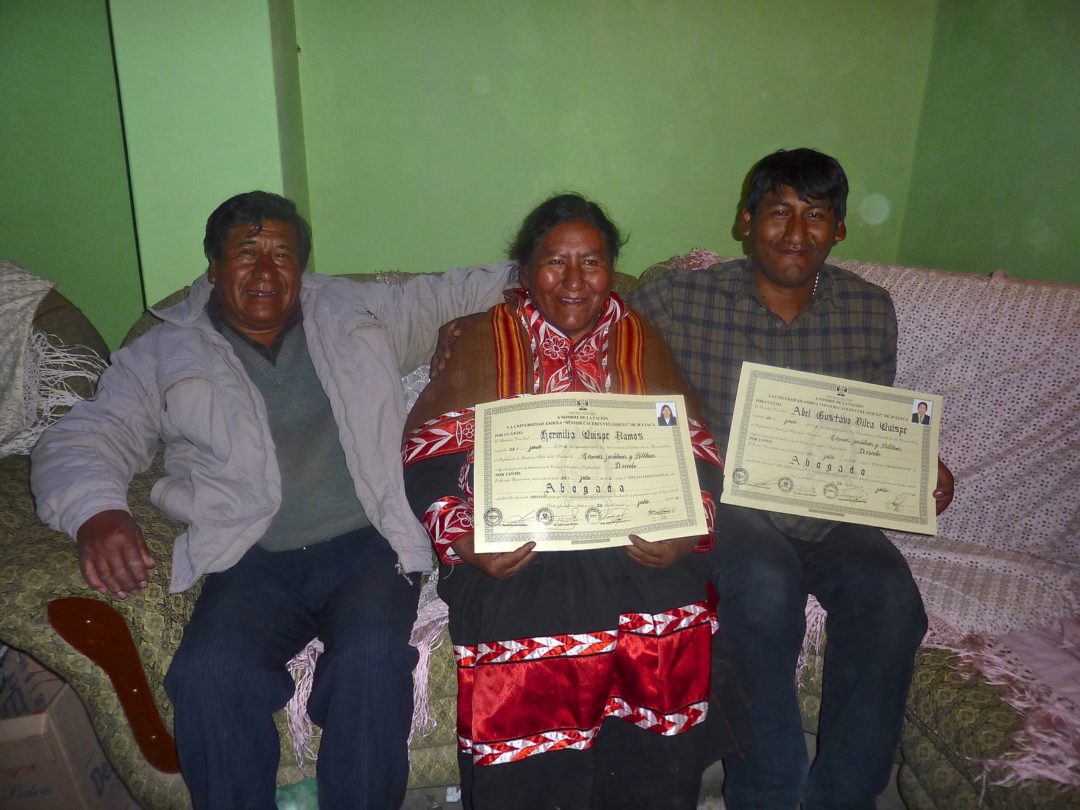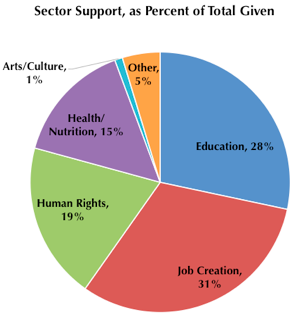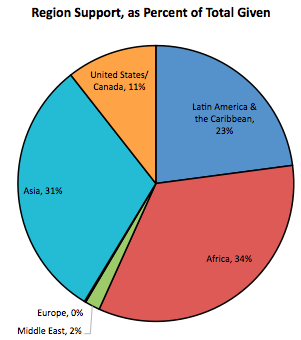Impact Study: Can a Small Foundation Make a Difference?
Categorized as: Stories on December 21, 2013.

Hermilla went to college at age fifty and became a lawyer, alongside her son Abel (R), with her teacher husband Gregio (R) cheering them both on for the many years it took to earn their degrees. We know that this family got a fair shot at education and work, via our partner, Freedom from Hunger. What about the rest of the world’s deserving families?
Editor’s Note: Our mission is to end poverty worldwide by supporting self-help programs in education and jobs creation. As we approach our ten-year anniversary in 2014, we wondered if our foundation’s effort and investments were getting us anywhere.—So, we spent 2013 on research to discover what impact, if any, we and our partners have had.
By Suzanne Skees
Wherever I go, we are always the smallest foundation in the room. Really. Colleagues will toss off such comments as, “We run a small foundation: Our annual grantmaking budget is only $10 million,” or, “We get by with a staff of three.”
Not so here at the kitchen headquarters of SFF, where my desk sits twelve strategic feet from the coffeemaker; we have an annual grants budget this year of under $100,000; and we get by with one full-time staff member (me) with a lot of help from generous volunteers.
Given our small—make that microscopic—size, we spent the first several years hurling grants at hefty social problems like poverty and human rights. Introspection, or any hint of evaluation, seemed behind the reach of our capacity or ken. Until it didn’t. The more we talked about our theory of change, the more impassioned we became.
Theory of change:
We can end poverty worldwide, within our lifetime, by supporting innovative self-help programs that create equal-opportunity in education and jobs, and sharing stories of social change that connect people to solutions and to one another.
Pit this lofty goal against our organizational resources, and you begin to see what compelled us to spend an entire year in introspective analysis. We hired an outside firm, a smart young team of social entrepreneurs called Third Plateau Social Impact Strategies, to conduct a strategic plan and impact study. They interviewed people and pored over data, concocting a plan for our future grantmaking, storytelling, and family engagement. They also took a hard look at what we have and have not accomplished in our first nine years, from 2004-2013.
Here’s what we discovered:
FAST FACTS, 2005-2013:
Number of grants: 80
Total amount granted: $1,398,110
Average grant amount: $17,476
Number of people served: 49,909,152*
% Serving Ultra Poor: 52.4%**
*Data calculated by Third Plateau as:
Our grants ÷ grantees’ annual budgets x number of clients they serve.
**Ultra poverty as defined by the World Bank as subsisting on ~$1.25/day.


One could say with all honesty that we have not done a thing in nine years. We have no products, no successes, no substance. Maybe that’s how we subsist off of just coffee in a kitchen office . . . We simply stand behind the people with effective, holistic, client-centered, poverty-alleviating solutions. As social-change investors, we are the invisible support behind the work of innovative nonprofits and social enterprises in whom we invest. And when we look at the numbers in “Fast Facts,” above, we have a lot to celebrate here at yearend. It’s all about who you know.
Stay tuned for more on our impact study next week.
Photograph of Hermilla Quispe Ramos by Suzanne Skees.
LEARN more about our partners here.
SHARE this story with your networks; see menus at top of page and below this list.
DONATE directly to one of our grantee partners; or consult these charity-review sites for more options: Charity Navigator, Global Giving, Great Nonprofits, and GuideStar.
SUBSCRIBE! Like what you see? Click here to subscribe to Seeds of Hope!
